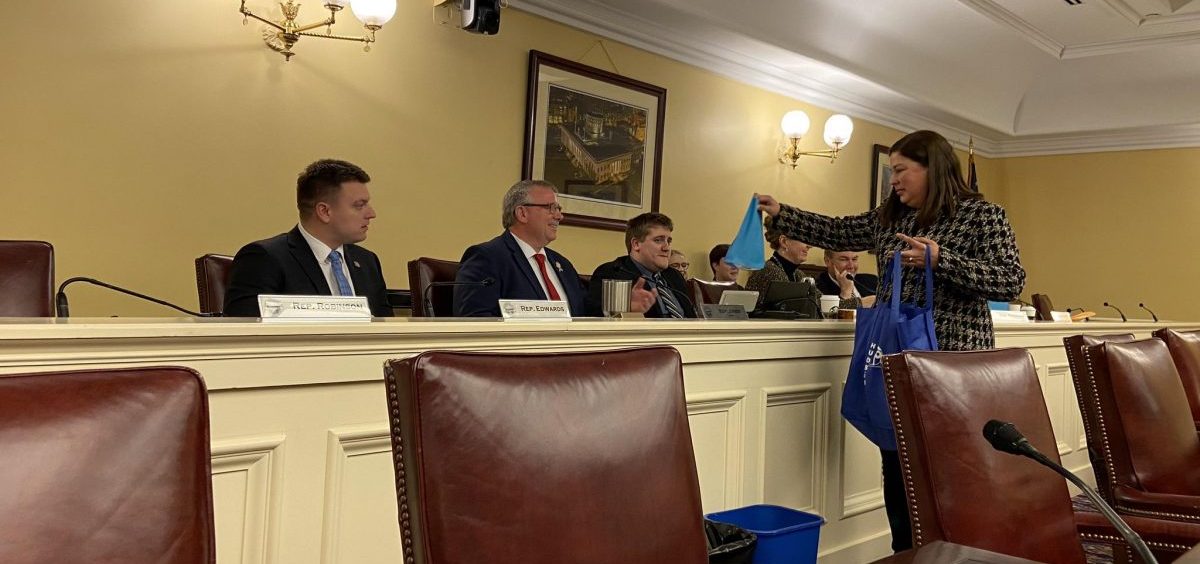News

Public, Parochial Schools Sound Off at Holiday Hearing on EdChoice Vouchers
By: Karen Kasler | Statehouse News Bureau
Posted on:
Lawmakers and school leaders would normally have Presidents Day off, but instead they spent it at the Statehouse, as testimony on changes to the EdChoice private school voucher program went on. Most of the witnesses were firmly in one of two camps – public schools or parochial schools.
The rare Presidents Day hearing was a marathon, as dozens of witnesses were scheduled.
“With a voucher system based upon a school being labeled as failing through state testing, it will allow for the taking of many thousands of tax dollars from public schools to private ones at the detriment of nearly 1.7 million public school children in Ohio,” said Sean Parsons, president of the Athens City School Board. Parsons and other public school officials are concerned about the changes to EdChoice enacted by the Senate.
This proposal would increase income-based vouchers, which are paid by the state. But it would also keep the EdChoice program, which is based on school building performance and those vouchers are paid by school districts: $6,000 for high school, and $4,650 for K-8. The Senate plan sets the number of EdChoice buildings at 420.
If lawmakers don’t enact this plan, or a House plan that would replace EdChoice with all income-based vouchers, next school year there will be 1,227 EdChoice buildings, in 70% of all of Ohio’s districts. That’s more than double the number of buildings where students were eligible for EdChoice vouchers this school year.
But the schools that accept EdChoice vouchers are pushing back. Overwhelmingly those schools are religious, many of them Catholic.
“Catholic schools throughout Ohio and throughout our country have saved public schools money. We have made an investment very strongly in urban education. Religious sisters throughout history have provided that service to many schools in Ohio and continue to do so, especially in schools that are affected by poverty and lack of choices,” said Sister Maureen Burke, the president of St. John’s School in Ashtabula County.
That question of funding is critical. Tom Burton is the superintendent of the Princeton City Schools in southwest Ohio, and said because six of his schools are on the list, those EdChoice vouchers could cost his district $3 million next year. He said that’s money that taxpayers who just passed a levy last fall would have to put in.
“This year Princeton will receive just over $1,100 per student. Compare this to the $6,000 it will cost us if one high school student leaves to attend private school. That’s equivalent to six students’ funding in Princeton alone,” Burton said.
But EdChoice supporters say the money is needed to offer a full spectrum of options to parents.
“Public schools rely solely on state and local funding to operate, whereas Catholic and other private schools are totally different. Our schools rely heavily on philanthropy,” said Vince Woodall with the Catholic Diocese of Cincinnati, which has 10,000 kids on EdChoice vouchers. “The 23 high schools within our archdiocese offer over $25 million a year in financial assistance on top of what EdChoice and our families are bringing to the table.”
Private schools do get auxiliary funds from the state – for instance, for textbooks, medical specialists and counselors. And public school districts do provide transportation for private school students.
And public school officials are frustrated that some EdChoice vouchers are used by students who’ve attended private school their whole lives.
“How does it make sense to deem a school is failing and take the most basic resource needed to improve? In many cases, those dollars are going to students who never even intended to use our public schools,” said Heather Weingart, president of the Shaker Heights City Schools Board of Education. Three of that district’s schools are on the EdChoice list.
But EdChoice supporters are frustrated that the window to apply for vouchers was supposed to open February 1, but the afternoon before, lawmakers moved that back to April 1.
Teresa Silva is a parent in North Royalton who needs EdChoice to help with the $18,000 tuition to send her son to Cleveland’s St. Ignatius, and says the criteria for vouchers has been place for a while.
“People are not liking the results. That’s why all of the sudden, even though it’s been in since 2014, we don’t like the results, now we’re going to go back and change the rules. I don’t let my kids play Monopoly that way,” Silva told the committee.
But there is agreement that the system that put so many schools on EdChoice needs to change.
“Currently Hudson does not have any failing schools, but that could easily change with such a broken evaluation system,” said Laura Jones, chair of the citizens’ committee that works to pass levies in the Hudson City School districts.
Lawmakers have said they want time to change the system, and likely will toss out the A-F report cards created in 2012.
As Jones finished her testimony, she passed out brightly colored bagged lunches to the committee members, who kept the hearing going without a break so all who showed up could state their case.

